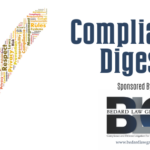The Consumer Financial Protection Bureau has filed its response to an order to show cause, arguing that a collection law firm should not be able to use the Supreme Court’s ruling in Seila Law v. CFPB to dismiss a lawsuit attempting to force the firm to respond to a Civil Investigative Demand letter.
A copy of the CFPB’s response to the order in the case of CFPB v. Law Office of Crystal Moroney can be accessed by clicking here.
This case began more than three years ago when the CFPB sent the collection law firm a CID as it began an investigation into the firm’s collection practices. The law firm, according to the CFPB, failed to fully comply with the CID, which led the agency to seek a federal judge to compel compliance. The law firm fought back, questioning the constitutionality of the CFPB as grounds for its non-compliance.
The CFPB opted to abandon that case and avoid the legal fight over its constitutionality at the time. But hours after it dropped the case, the CFPB filed a new CID with the law firm, which it said was “nearly identical” to the original request.
Saying that the defendant has “spilled significant ink” arguing that because the director of the CFPB can only be fired for cause — until the Seila Law case — it should not have to comply with the CID. But now that the director of the CFPB can be fired for any reason, the defendant is changing its tune, the CFPB said.
“Unfazed, LOCM shifts directly from complaining that the President lacks sufficient power over the Bureau to complaining that the President wields too much power over the Bureau,” the CFPB wrote in its brief. “In particular, LOCM argues that Seila Law, while purporting to remedy the constitutional problem with the Bureau’s statute, in fact worsened the problem by allowing the President to oversee the Bureau’s use of funds, which the Bureau by statute draws primarily from outside the annual appropriations process. That suggestion is illogical on its face and contradicted by the Supreme Court’s actual analysis in Seila Law. The Court was well aware of the Bureau’s method of funding when it decided that case, and what it concluded was that such funding increased the need for the President to be able to remove the Director at will.”









